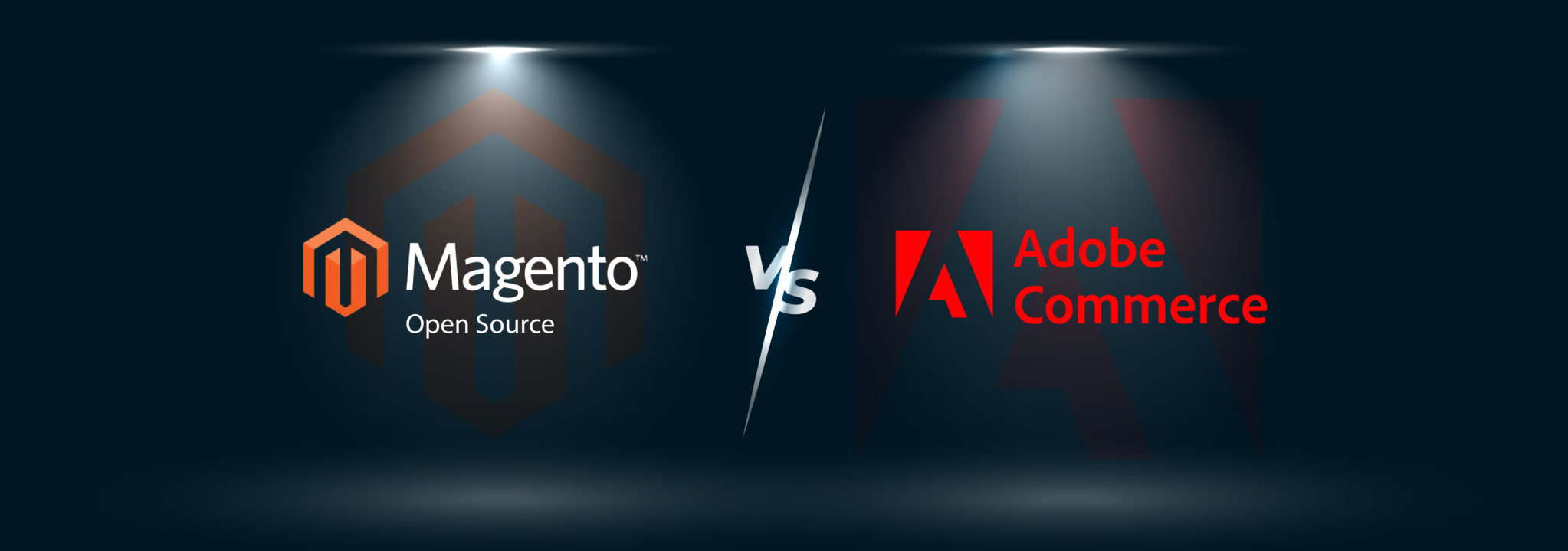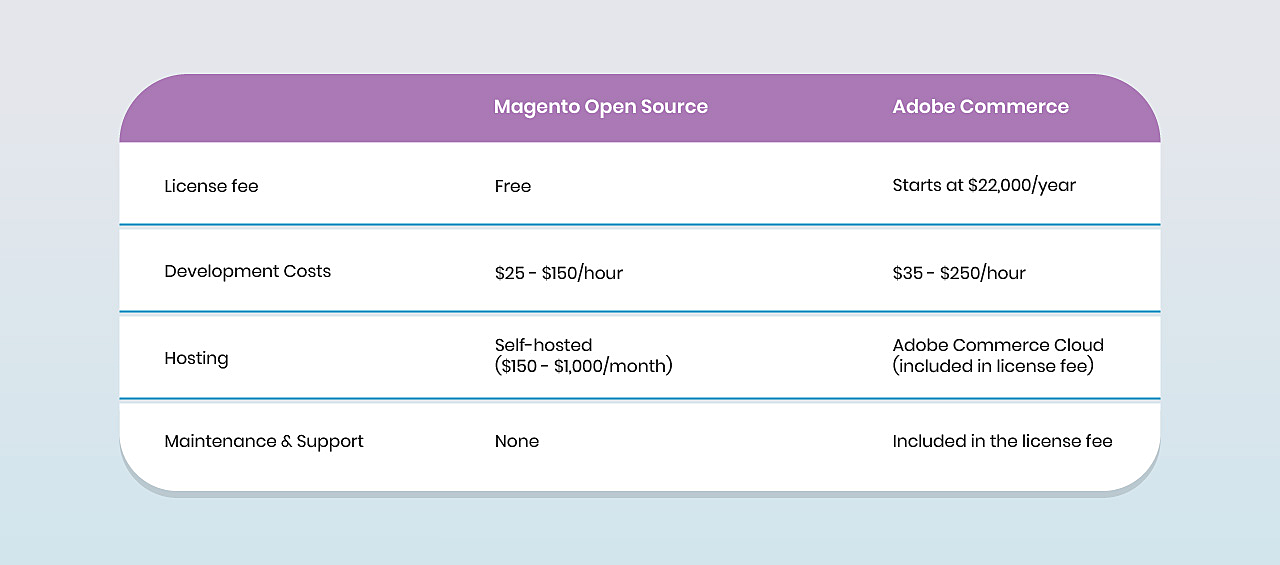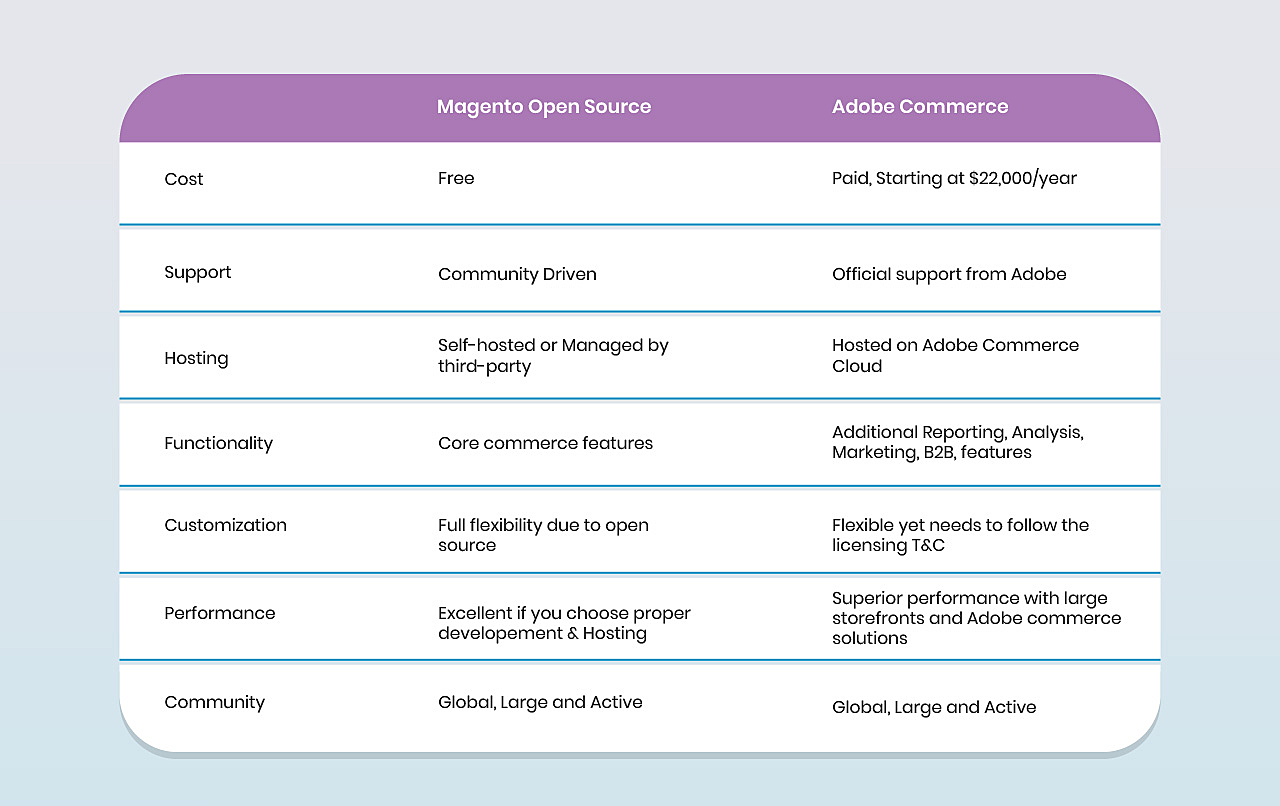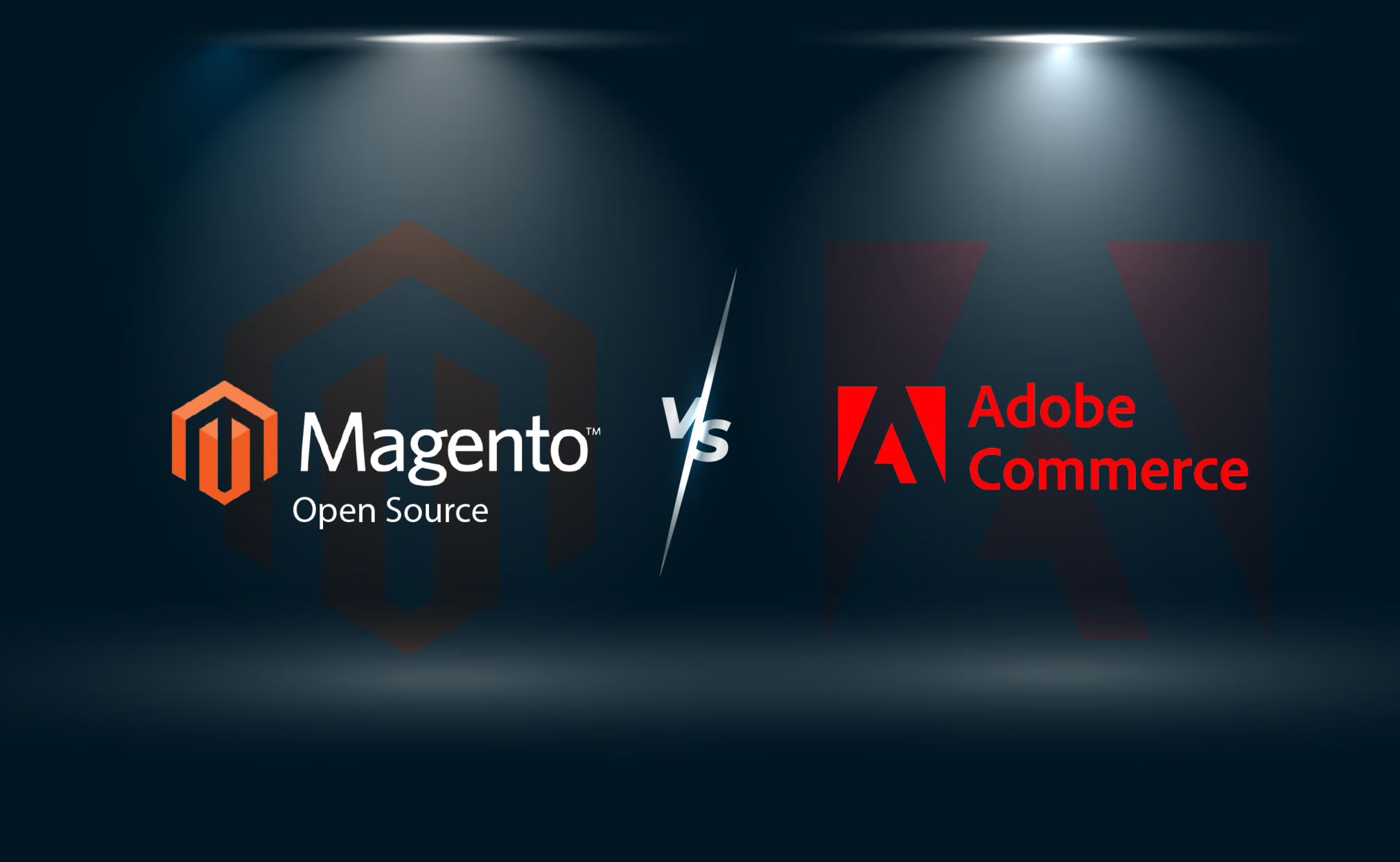
While breathing Magento for a decade now and serving e-commerce website owners with their most complex questions, we have tried to create this article that leads to solving the initial questions they mostly came up with us. For instance, Which one is better: Magento Open Source or Adobe Commerce? Are they both similar to managing admins? Which one is easier to use? With an increasing number of businesses selling their products and services online, choosing the right e-commerce platform has become a crucial aspect of a sound business strategy. Magento continues its successful run as one of the most preferred e-commerce platforms. Businesses need to leverage the opportunities presented by these platforms and take their e-commerce ventures to new heights.
Table of Contents
Introduction
As an e-commerce business owner, you may be curious to know what model works best for your digital Commerce before investing in them. In your quest to pick the best platform for your business, you may have often wondered, what’s the difference between Magento Open Source and Adobe Commerce?
Without a doubt, Magento is an e-commerce-centric platform for providing an entire shopping cycle. As the name suggests, Open Source offers several features for free; Adobe Commerce provides even more features at a specific price. However, there is more to this than meets the eye.
Let’s get a closer look at each of these Magento platforms as we are sharing real insights on the features, pricing, and support for your Magento website!
Magento Open Source Vs. Adobe Commerce
Magento Open Source itself is a powerhouse and feature-rich platform. When it comes to scalable, customization, and e-commerce-focused platforms, Magento fits the best! And why not? It’s free to download and use. Regardless of Magento vs. Adobe Commerce, this platform is often used when building online stores. Characteristics like mobile-friendly, SEO features, a wide range of payment tools, shipping partners, and catalog management exist in Magento!
Magento is used for business adoption like B2B, B2C, B2B2C, or D2C. At times, this platform’s significant difference is related to the cost of ownership. However, that also specifies the category in which your business falls from SMEs to mid to enterprise level. Compared to Magento open-source with Adobe Commerce, one is free, yet the other is a paid product of Adobe with enterprise-level support and service. But to clear out the message: “The Codebase of both the platforms is the same.” It allows excellent e- commerce features, extended customization, and support through the Magento marketplace and a large global community! Conversely, paid versions are being taken care of by Adobe with extra features, functionality, reporting tools, automatic security patching, and hosting on Adobe’s architecture with Adobe Commerce Cloud.!
Yes, there are some misconceptions about these two terrific e-commerce solutions, and the most hyped one is that Magento is now Adobe Commerce.Is this true? Let’s find the answer below.
Magento is now Adobe Commerce.
Okay, so the story behind owning Magento is that Adobe has started to replace it by making their commerce product strong in the market. To position itself against the large, loving, and caring Magento open-source community, Adobe Commerce has repositioned it, saying Magento, now Adobe Commerce! It’s a long story, and I need to tell you over the call.To simplify it, both the platform Open-source and Adobe Commerce share the same technical aspects! The foundation is the same, and you can say Adobe Commerce is an advanced version of Magento Open Source. It has to be!
They are charging for the superior services and out-of-the-box solutions and marketing hand!
Which one to choose is a tricky question and depends on how you would like to use the Magento foundation and build your commerce solutions. There’s no straightforward solution to pick one over another, and you have to study your own to get the correct answer based on features, pricing, and support! And for this, let’s get involved in each unique version.
That said, Open Source boasts several big-ticket clients as well. This is due to its simplicity and ease of use. Further, the complexities involved in acquiring newer licensing structures make Open Source attractive for high-volume retailers.
Features & Functionality
When it comes to features and functionality, both the platform serves very professional and commerce-centric solutions. It is about the additional enhancement and extending the open-source solution with other Adobe services like marketing, reporting, and payments.
So, how can the features be differentiated? Let’s find out!
- Commerce-centric Experience:Both the solutions, Magento Open Source and Adobe Commerce, serve a commerce-centric approach. Experience that includes browsing products, managing the cart, and a customizable checkout. This solid foundation explains why the Magento framework has been a popular choice and has dominated the digital commerce platform market.
- Marketing Tools:Adobe Commerce seamlessly integrates with Adobe Experience Manager and its suite of other Adobe services, providing customers an unparalleled shopping experience that other offerings, including open source, cannot match. However, it is essential to note that using this suite may result in a vendor lock-in situation that ties you to the Adobe ecosystem for the foreseeable future, which may or may not be desirable depending on your business needs.
- Analysis and Reporting:One of the reasons for Adobe Commerce is its robust reporting and analytics capabilities. Its built-in tools can provide deep insights into your business. While on the other side, Magento Open Source may require the integration of third-party services to achieve similar results, which could lead to a fragmented process compared to Adobe Commerce.
- Adobe Commerce Only Features:Adobe Commerce is determined by its additional Commerce-only extensions that provide exclusive features. These modules are built on top of Magento Open Source to create a feature set that is only available with Commerce. These features include Live Search powered by Adobe Sensei, seller-assisted shopping, a complete B2B toolset, business intelligence tooling, access to Adobe App Builder, and more. If you require these features, Adobe Commerce is the right choice. Regardless, Magento Open Source also benefits from these modules as some features are eventually made available in this version. An example of this is the Page Builder content management tool, which was initially only available in Adobe Commerce but is now available in Open Source.
- Commerce Cloud:Adobe Commerce offers various benefits, including hosting and infrastructure provided by Adobe. This is a compelling reason to choose Adobe Commerce over Magento Open Source. For Open Source, it's advisable to choose a managed hosting solution provider with an Adobe technology partner, such as JetRails, Cloudways, and more. This helps to bridge the gap between the two platforms and ensures a seamless storefront experience.
- Flexibility & Performance:Magento Open Source’s nature offers developers a great deal of flexibility, allowing them to build custom features and workflows. Adobe Commerce, which shares the same codebase as Magento, also benefits from this open-source commerce foundation. Both the solutions perform well when proper hosting and development practices are in place. Although Adobe Commerce has some enhancements, such as improved indexing and performance optimizations, these are only noticeable for extremely large store- fronts that need to scale to a great extent.
If you're looking for more advanced module functionality, along with marketing tools and reporting insights, and prefer having support and hosting directly from Adobe. Adobe Commerce is the obvious choice for you. On the other hand, if you're comfortable with conducting a fit-gap analysis to compare all the features you need between Commerce and Open Source or are willing to build custom modules with the exact functionality your business requires, then Open Source is also a very reliable choice.
As shared earlier, the foundation of both solutions is the same, so enterprises can select the open-source over the Adobe Commerce solution and build their dream store! But remember, it could be achieved only with additional work, time, and effort that you could have achieved by simply having Adobe Commerce on the go!
Ease of Use
E-commerce platforms focus on the ease of operations and how hassle-free management of orders and products can be done! It is essential to have ease of use for admins to scale the Commerce. Additionally, the platform should have a user-friendly interface for adding and updating content. So, when it comes to ease of use, how do the two editions compare?
- Admin Interface:The admin interfaces enable you to access all backend functions, such as product catalog management, customer lookup, and sales administration. Although they are skinned differently, they carry out nearly identical functions. Adobe Commerce's enterprise modules provide additional features like B2B, omnichannel personalization, and additional reporting, among others.
- Product Management:When it comes to managing products, both Magento Open Source and Adobe Commerce offer identical product management capabilities. With both versions, you can easily work all product details and fields, related products, up-sells, and cross-sells. Additionally, they both provide bulk update capabilities to allow you to carry out mass actions in a streamlined way.
- Order Processing:Both have robust order management capabilities, with almost identical features such as the ability to edit and manage orders and invoices, generate credit memos, and handle shipments. However, Adobe Commerce has a slight advantage as it allows the processing of returns with return merchandise authorization (RMA) numbers.
- Maintenance and Upgrades:Maintenance and upgrades for Magento Open Source and Adobe Commerce are pretty similar. Both versions use PHP's Composer command-line tool to manage updates, which can be a complex process. However, there is a crucial difference between the two: Adobe Commerce has a technical team that can create and provide bug and security patches for your store, which is not possible for Open Source. While both versions have similar methods for applying patch fixes during deployment time, the process may differ slightly.
Looking at the above-narrated points, there’s no major difference compared with the paid solution while handling the backend. So in this case, both win the heart of admins.
Pricing
Magento Open Source is an entirely free solution that everyone can download, configure, and adopt for their Commerce, while Adobe Commerce is a paid solution where merchants need to purchase a license from Adobe!

Please note that there’s no fixed pricing for Adobe Commerce, and how you choose your commerce plan depends on Adobe Commerce or Commerce Cloud.
Here, the pricing shared is negotiable, and it might be possible that two different merchants have the same functionality, plan, and extended services from Adobe Suits, but their licensing fees differ. So, when you are planning to have Adobe Commerce, be cautious and negotiate with the team to get the discount on your license fees. Here’s the kind of breakdown you should be looking for:
- License Fee:Magento Open Source is free for all, while Adobe Commerce has a significant license fee.
- Development Fees:Open source development needs lower fees compared to Adobe Commerce. Adobe Commerce professionals charge high and possess skilfulness. On the flip side, while open source is lower in cost, time and effort are high as there’s no advancement or support from Adobe, and hence, the team has to put their efforts into fulfilling any Custom Magento work.
- Hosting Charges:As mentioned in the table, Open Source needs additional fees to host and manage the server, while Adobe Commerce has a cloud version that includes hosting as well!
Here, you can see the clear win is for the Magento open source, yet if you are an enterprise and want to have that added advantage of getting direct support from Adobe, a Paid solution is the answer. If you have a specific case where Adobe Suit fits the best, it will also help to reduce the cost of ownership.
Support
Support is as important as choosing the right e-commerce platform, as it will help when your commerce store breaks and help you scale and thrive in your business.
- Magento Open Source:Being open-source, it doesn't offer official support but has a large and active open-source community. There are Meet Magento community events hosted worldwide, multiple Slack groups and discussion forums available, and developers willing to help out.
- Adobe Commerce:Offers official support, but only to those with a paid plan. However, you can benefit from having service-level agreements (SLAs) in place to ensure your support requests are answered. Adobe Commerce shares the same Magento community as Open Source, so many developers and agencies who work with Adobe Commerce are also familiar with its complexities.

For both the solutions, Dev Docs are available as a wealth of information and deep knowledge of Adobe Commerce that is also applicable for Open source. In summary, both Open Source and Commerce have access to a thriving community, but Commerce is the only version with official support. If you think your company would benefit from direct support from Adobe and don't mind the extra costs involved, Commerce might be the best choice for you. Or move with the Magento Agencies, who could be happy to help, support, and scale your store with reliable, timely solutions!
Conclusion
There is no doubt that Magento is one of the most powerful e-commerce platforms out there. It is spreading its wings through the business arena while continuing its reign in the online market space. Whether you finally go for Open Source, Commerce, or Commerce Cloud, the final decision should be based on factors such as your unique e- commerce needs, pricing, licenses, the availability of the required features, cultural fit, and if you want to move/expand to the cloud. After all, nobody understands the scope of your business as well as you do. Even there are enterprise agencies who still prefer to have open-source than Commerce! So the answer is to Do your homework well before moving with any Free or paid solutions!

